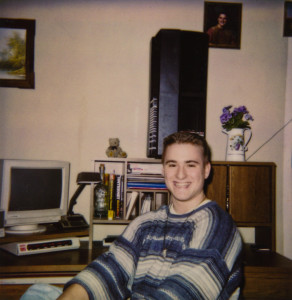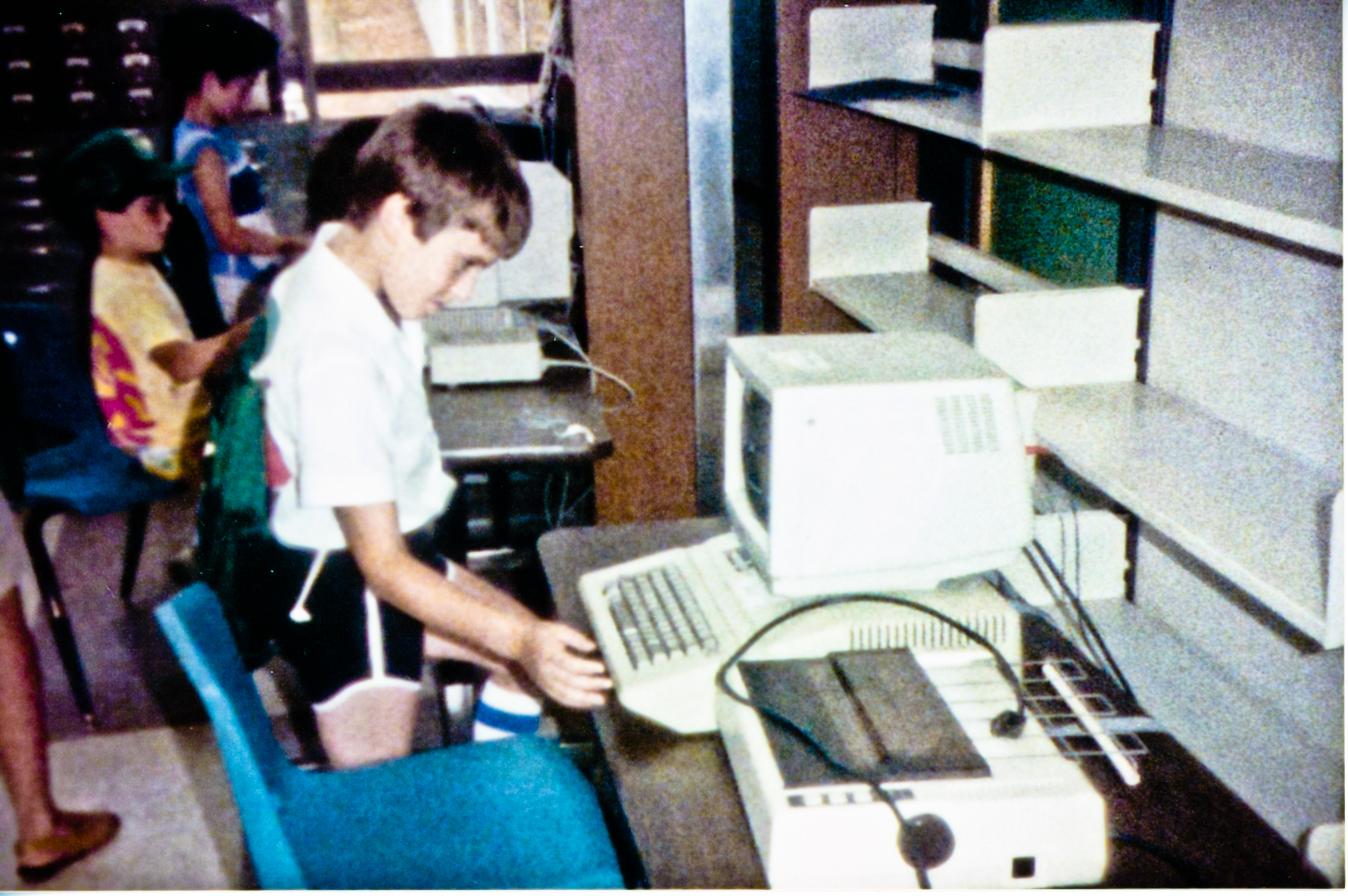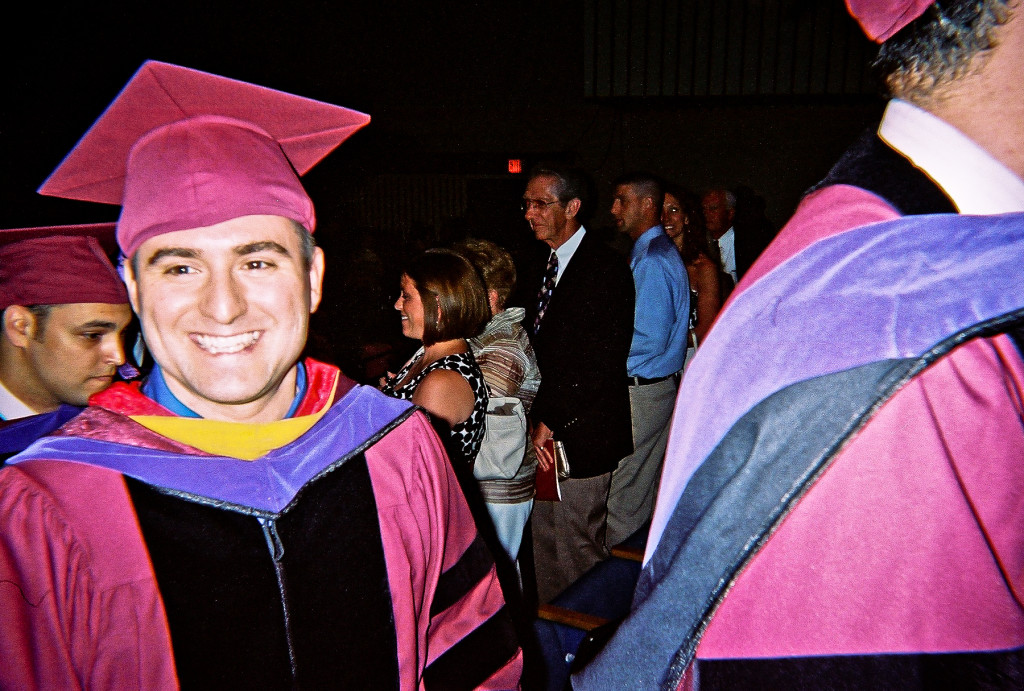CHILDHOOD
At the age of 8, I was interviewed at a local mall for a prevention program that created a “kit” for children, including a video so that in the event the child was missing, the police would have a recent snapshot of the child’s appearance, voice, likes and dislikes. In watching the video, the interviewer asked me a simple question posed to children this age, “What do you want to be when you grow up?” I replied, “I want to be a Mathematician!” I remember the interviewer just staring at me, probably expecting me to say something along the lines of “Firefighter!” or “Astronaut!”
In looking at what drives me today, I think back to this moment and realize that I have always been unconventional in my thought process, which explains why even today I constantly find myself “thinking outside the box.” I strive to solve hard problems with elegant solutions, from creating an interesting video game mechanic, to advocating from a difficult position in a law paper.
As a child, I had a plastic picnic table where I would draw, color and create mock ups of my favorite toys for most of the day on a daily basis. One example would be creating a paper version of a He-Man character called Mekaneck, where his primary feature was his ability to stretch his neck to the length of his body. The version that I created had a piece of paper on the back to hold the long neck in place, and so like the actual toy, my paper version could move a neck up and down. Another example is when I created paper versions of the toys called MadBalls. In this instance, I was limited to paper materials and had to figure out a way to create a paper mock-up of these plastic balls. After flipping through my books, I found the solution: Origami Balls. I would hold a craft fair in the living room where my mother would buy all my creations, and this would give me the funds I needed to buy certain toys.
I have always been a consumer of all things related to games, agnostic to the medium in which the game is conveyed. Even as a child, along with my craft fairs, I would also construct board games and card games. One of my card games had knights for one set and monsters for the other set, with hit point values on each of the cards. You would simply roll a six sided die in order to determine the damage, minus the armor points of the characters. I also created board games on various interests from Greek Mythology, to Spy vs Spy, to Ninjas.
These interests in games translated very well into other mediums, specifically when I received the Atari 800 Home Computer. Playing “Space Raiders” for hours inspired me to try my hand at developing a game on the Atari computer myself. I remember creating a very crude version of hangman in Atari Basic, and learning a very difficult lesson on why audio cassette tapes were a horrible data storage choice.
This passion for games is partially derived from some of the fondest memories of my youth playing “Combat” on the Atari 2600 and “Street Fighter 2” on the SNES with my brother.
When in High School, my mother bought me the best gift I could have asked for: My first personal computer. This PC helped me to explore my love of video games, the challenges with developing video games, as well as set me on the current path where I find myself today. From the first day I went through the entire DOS manual, I knew that I wanted to learn the theories behind the machine that I was exploring, primarily how and why one could use commands to tell a computer to do different tasks. The main driver for wanting to explore this field and software development more specifically is the love of video games.
I had ideas I wanted to explore but didn’t fully understand how to communicate and refine these ideas to a functional program on a PC. I knew the different elements of what made Doom such a marvel, from the fast paced combat, abstract level designs, feeling of fear when encountering a Baron of Hell, to the challenge of deathmatch, but I was really interested in how you could translate these gameplay elements from simply ideas to something more concrete on a PC platform.
My initial attempts at trying to express my ideas on the PC platform were learning the tools associated with certain types of games. ID helped to create a community around Doom, and the level editor was exactly the type of tool that I gravitated towards to try out certain gameplay mechanics that I had in mind. I played Doom deathmatch against friends from around the neighborhood. Based on these experiences, there were certain types of ideas I had related to weapon placement and level design to avoid an opposing player from staying in one spot that had spawned ammo and armor. I received great feedback from friends playing the levels that I created because of the simple fact that they were forced to move around the map which created a more intense and satisfying experience for them.

At this point, I started to dabble in Microsoft QBasic. I wanted to try to develop video games and this was the most accessible language, interpreter and IDE that came bundled with DOS. My first experience with QBasic was converting my Alto Saxophone harmony sheet music of “The Imperial March” from Star Wars to the QBasic using the PLAY and SOUND commands. I added a screen flash with a drawing of lightning to crudely portray Palpatine’s wrath. After this, I paired up with a friend who also had similar interests in video games, and we had a two day game development jam where we produced a graphical text based adventure game in a medieval fantasy setting in QBasic. I was responsible for the layout, the drawings which were scanned in, and the core parser for the text input interpreter. Near the end of the development, we hit the memory ceiling for the QBasic interpreter and had to remove some pieces to complete the game.
These experiences with video game development, coupled with a passion for video games were the motivating factors in my decision to apply to college in the Computer Science field. I did not fully comprehend nor appreciate this decision so early on in my college career.
On the first day of Computing I, in an auditorium that normally seats three hundred, Professor Canning was candid in his announcement of the difficulty the program posed. This frank assessment caused considerable rustling in a crowd of three hundred thirty naive freshmen packing the aisles and doorways. This is at the height of the “dot.com” boom when stories abounded of computer science majors developing web pages for $75,000 per year. How difficult could this accredited program possibly be?
As an eighteen year old supporting himself, I did not fully conceptualize the scope of responsibilities that lie before me. Academic responsibilities included setting up tutoring sessions with dorm mates, attending budget meetings for the student council, taking notes and tutoring physically handicapped students, evaluating programs as a member of the Computer Association, and working with high school scholars as a professor’s assistant. This time was budgeted with jobs averaging about twenty five hours per week to help pay for school loans. In this time, I was starting to develop small 2D games utilizing the Allegro library under the Linux OS.
The undergraduate degree provided a breadth of knowledge but I knew that I needed to pursue a deeper understanding of computer science. I decided to enroll in the graduate program part time while working in the software industry full time. The depth of knowledge gained through graduate school ranges from analyzing algorithmic complexity to calculating precise mathematical equations in order to display graphics. The path towards a graduate degree includes reading fifty pages per week of computational Turing models and programming language theory and solving problems via software development projects for a total of forty hours per week of work. As a hobby, I managed to complete “Tricks of the Windows Game Programming Gurus” which introduced me to the world of DirectX, fixing bugs from the sample code along the way.
During my graduate studies, I developed a neural network utilizing vision hardware in order to demonstrate that a robot can learn to selectively choose objects to grip and pass back, researched and presented a conceptual data visualization application utilizing human brain wave patterns in order to communicate in a connected world, and designed and implemented an IP based encryption protocol for confidential communication between two users.
In looking at my chosen disciplines in education as well as career choice, one can see that I have worked in the very analytical, objective field of software engineering. This field is consistent with my degrees in computer science. This same methodical, rational viewpoint is also the driving force for pursuing a legal education.
In the pursuit of my graduate degree, I realized how ubiquitous technology has become woven into our society where legislation is now passed to control its very existence. There are cases covering hacking attacks, intellectual property, software patents, copyright infringement, loss of personal data via computer storage, identity theft and monopolization of the software market. These are issues that I have closely followed for years and the cases themselves require not only an understanding of the law but of technology itself. The decisions in these cases directly affect my field on a daily basis and I wanted to fully understand how I could contribute to this new field of law. This thought process led me to attend law school.
The journey through the trials and tribulations of law school began with a naive protagonist thinking to himself “Law school should be a fun experience.” Thousands of case book pages read, hundreds of briefed cases, scores of papers written, and thirty five hours per week of studying for four years coupled with a full time job all came to a finale, graduating with honors. After graduating law school, I finally had time to fully contemplate where I am and where I wanted to be.
The last hurdle to complete this particular journey was to sit and pass the bar exam. I have never studied for one exam as much as I did for this one knowing full well the difficulty that was ahead especially given that I was still working full time. The bar exam was over two days, 6 hours per day, with 3 hours in the morning, and 3 hours after lunch each day. I had to compel my hand to keep writing as the clock ticked down the last day (essay day), but then it was over and the wait for the results began. After months of waiting, I finally got the results and I passed! I had the swearing in ceremony at Faneuil Hall in Boston, MA. This was a proud moment because after all the sacrifice and hard work, I was finally able to take my first breath as an attorney.
The path was not easy at all, but as I have learned, anything worth doing never is easy.
I realize that no matter what capacity, either from managing the intellectual property portfolio for a video game company, to developing a graphics engine, or even starting my own indie game studio, I get meaning from delivering an end product that gives joy to the user. For me, life has always been and will always be more about the journey than the destination. Being involved in a field that makes one want to get up everyday and look forward to solving difficult problems is one way to achieve this goal.


